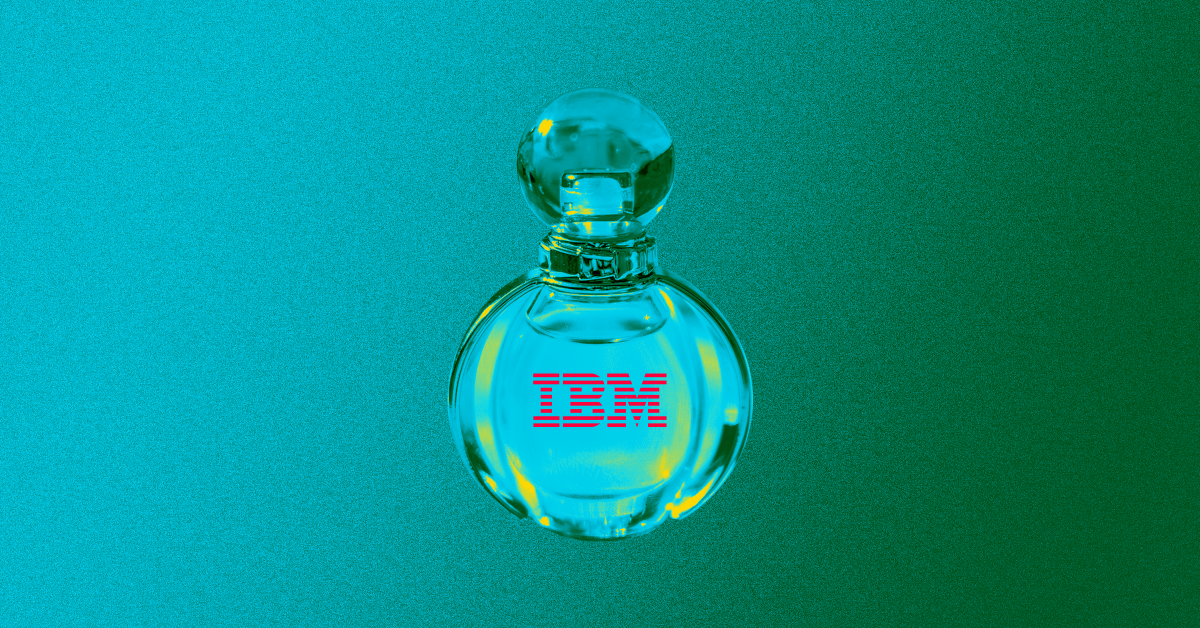IBM has developed a scent algorithm, and it’s coming for the fragrance aisle.
The creation of a perfume is often treated as a bespoke art. The French pride themselves on centuries in the olfactory business, and professional scent masters — often referred to as “noses” — spend decades learning the craft, apprenticing under masters. Giant cosmetic companies such as Coty and Estée Lauder write huge checks to storied fragrance agencies, which will employ meticulous perfume chemists, scrupulous in the art of aromachology.
A common theme here is that the skill of developing a fragrance is extremely valuable — and extremely human. Scent is, after all, the sense that science says has the strongest ability to evoke memories, or trigger emotions and moods.
Now IBM is attempting to turn the traditional model on its head by harnessing the power of artificial intelligence to develop scents.
Symrise, a major global fragrance company based in Germany with clients including Estée Lauder, Avon, Coty, and Donna Karan, recently tapped the tech giant to study how machine learning can be applied in the world of fragrance.
IBM developed an algorithm that studies existing fragrance formulas and then compares the ingredients to other data sets, like geography and customer age. This algorithm, which was created in IBM’s Thomas J. Watson Research Center and which the company has named Philyra, can now develop new perfumes that will target very specific market segments.
Achim Daub, a Symrise executive, says the company has already sold two AI-developed perfumes to O Boticário, Brazil’s second-largest beauty store. The two scents, whose names were not shared with Vox, will start selling inside O Boticário’s 4,000 locations next year.
It all sounds a bit futuristic. How exactly does the process work? And how can an algorithm understand the sensual, transformative, and personal components of choosing fragrances?
How does IBM’s perfume AI work?
Symrise has 1.7 million fragrance formulas that it’s collected over the years. These include scents that were sold to companies like Estée Lauder and Coty, which then market and package them as fancy perfumes, as well as flavors and concoctions used for things like toothpaste, pet food, detergent, candles, snack foods, and soda.
Symrise shared this list of fragrance formulas, along with information on how they performed sales-wise, with IBM. Philyra added these to a database and compared them to additional customer data provided by Symrise, like which scents were best-sellers and where, who was buying them, and which age demographic prefers which scents the most. Philyra can then use that information to create new formulas targeted to specific demographics.
![]()
![]()
![]()
Richard Goodwin, a research scientist at IBM who is part of the team that developed Philyra, describes this artificial fragrance developer as “a system whose learned to create a fragrance like a human apprentice.”
“Just like an apprentice would learn from a master what combinations of ingredients would work well, like what would be a good substitute for orange oil and when, or when to add rose oil instead of lemon, machine learning will create a fragrance based off which formula worked best,” he says.
In the case of the perfumes Philyra made for Boticário, the brand asked for scents that would target millennials living in Brazil. Philyra compared formulas against scents that were popular in that area and age range and came up with two. The first, according to Symrise senior perfumer David Apel, smells like “things I only can associate with exotic cuisine … fenugreek seeds, green cardamom pods, carrot seed, all wrapped with a milky, buttery, rich base note.” The other fragrance is a fruity, floral scent — seemingly aimed at girls — and has scents of Osmanthus tea with lychee and patchouli, which Apel calls “innocent, sparkling, effervescent.”
Daub says both fragrances received stellar responses from focus groups, and came out on top even when tested against other perfumes popular with Brazilian millennials.
Goodwin believes Philyra is an example of how “computers can be creative.” It can quickly create a new perfume by sifting through 1.7 million data sets with ease. This is similar to other AI creations, like how a data scientist created the Meow Generator by adding thousands of photos of cats into a generative adversarial network.
Daub says Symrise decided to hire IBM after reading about Chef Watson, IBM’s AI cooking app. The same supercomputer that dominated Jeopardy in 2011 made headlines for its ability to concoct new recipes in a partnership with Bon Appétit.
Daub felt the mixing, brewing, and smelling components of the food world was similar to the development of commercial fragrances, and thought AI could help the company innovate. Symrise also recently invested $6 million into Phlur, the fragrance startup that sells its perfumes to customers online by pairing scents with music and photography. Daub believes AI will ultimately help the fragrance market make money by targeting “missed opportunity” in fragrance sales.
He’s careful to say that Philyra won’t replace humans in the fragrance development process — not yet anyway. In the case of the two perfumes that will be sold at O Boticário, a machine developed the fragrances but a master perfumer at Symrise tweaked the product “to emphasize a certain note and improve how long it lasted on the skin,” according to Goodwin.
“It’s a very human reaction to be concerned about technology replacing a human, and we’re not talking about replacing perfumers tomorrow,” says Daub. “This isn’t something to necessarily market to customers, but the internal capability is that can increase efficiency and speed.”
Instead, he says Philyra will function like “an apprentice that the master perfumer will be able to work with” — which sounds a whole lot like replacing apprentice perfumers to me, but details! Symrise plans to roll out the use of Philyra into its perfume school soon.






